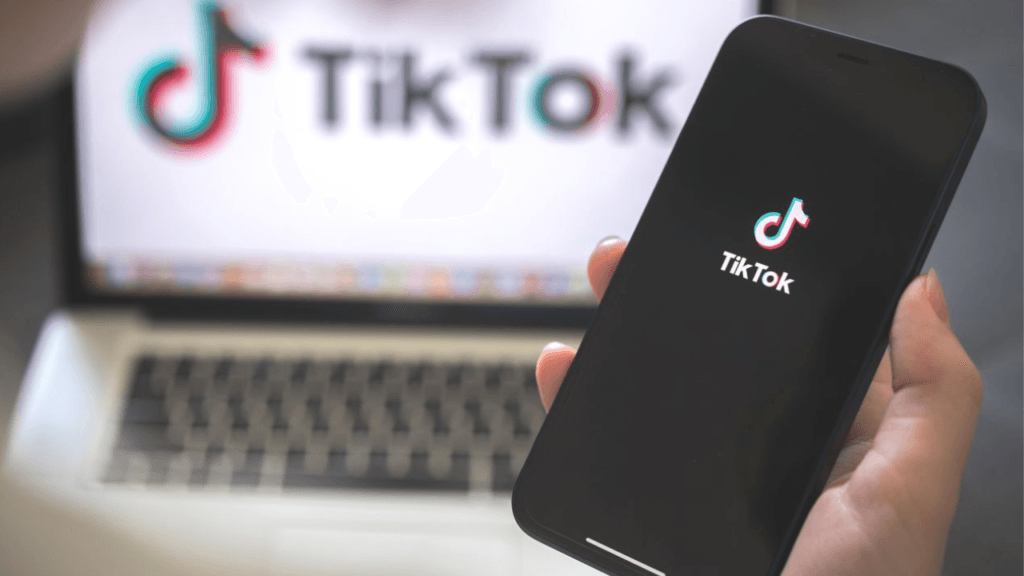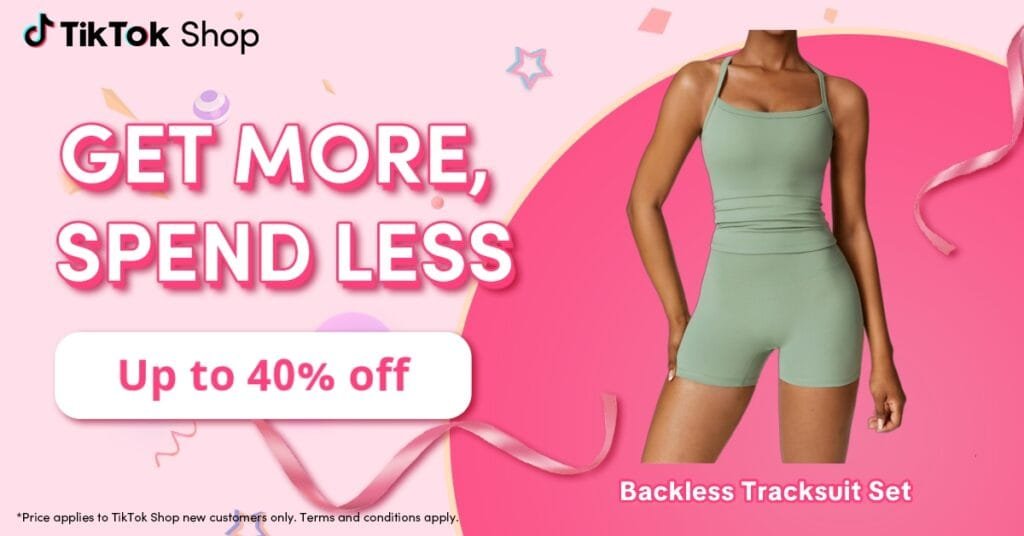TikTok has taken the world by storm, becoming one of the most popular social media platforms in recent years. With its short-form video content and viral trends, TikTok has captivated millions of users globally. Whether you’re a content creator, a business, or simply a fan of entertaining videos, TikTok offers a unique platform to connect, create, and share. In this blog post, we’ll explore everything you need to know about TikTok—its features, user base, impact on culture, and much more. Let’s dive into what makes TikTok such a powerful tool for entertainment and business alike.
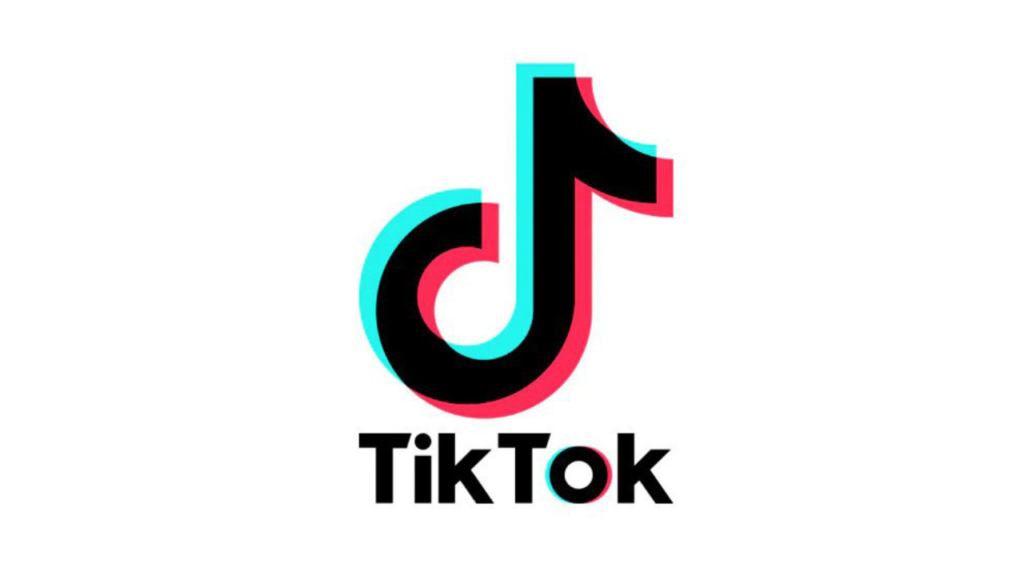
Table of Contents
Introduction to TikTok
social media platform that allows users to create, share, and discover short-form videos ranging from 15 seconds to 10 minutes. Launched in 2016 by Its the Chinese company ByteDance, TikTok quickly became a global phenomenon, attracting millions of users with its engaging, bite-sized content. Its success is driven by an innovative algorithm, a wide range of editing tools, and the ability to integrate trending music and effects seamlessly into videos.
Unlike traditional social platforms, It focuses on fostering creativity and instant entertainment. It’s a space where users can showcase their talents, participate in viral challenges, or simply enjoy scrolling through a diverse feed tailored to their preferences. With its ever-evolving trends and growing user base, TikTok has redefined how people consume and interact with digital content.
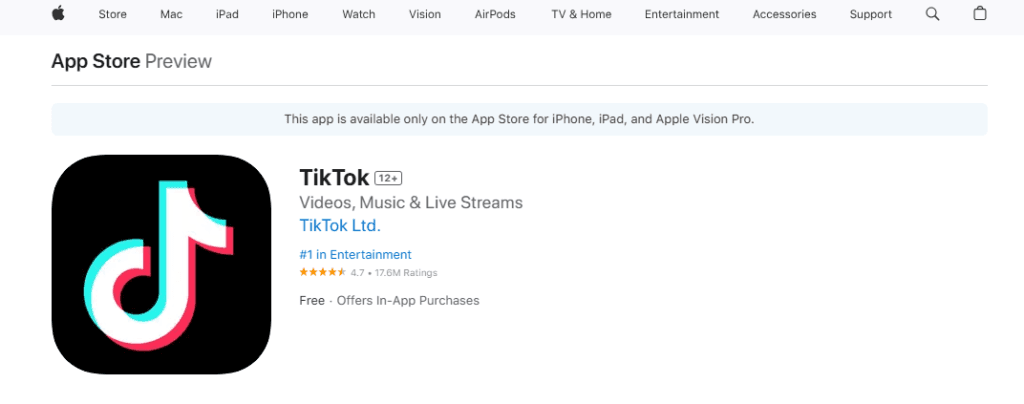
Key Features That Define TikTok
- For You Page (FYP): Personalized video recommendations based on user behavior.
- Video Editing Tools: Built-in filters, effects, and music tracks for easy content creation.
- Community Engagement: Encourages collaborations through duets, stitches, and challenges.
It isn’t just a platform for entertainment—it has also become a powerful marketing tool for brands, creators, and businesses, enabling them to reach vast audiences in a highly engaging way.
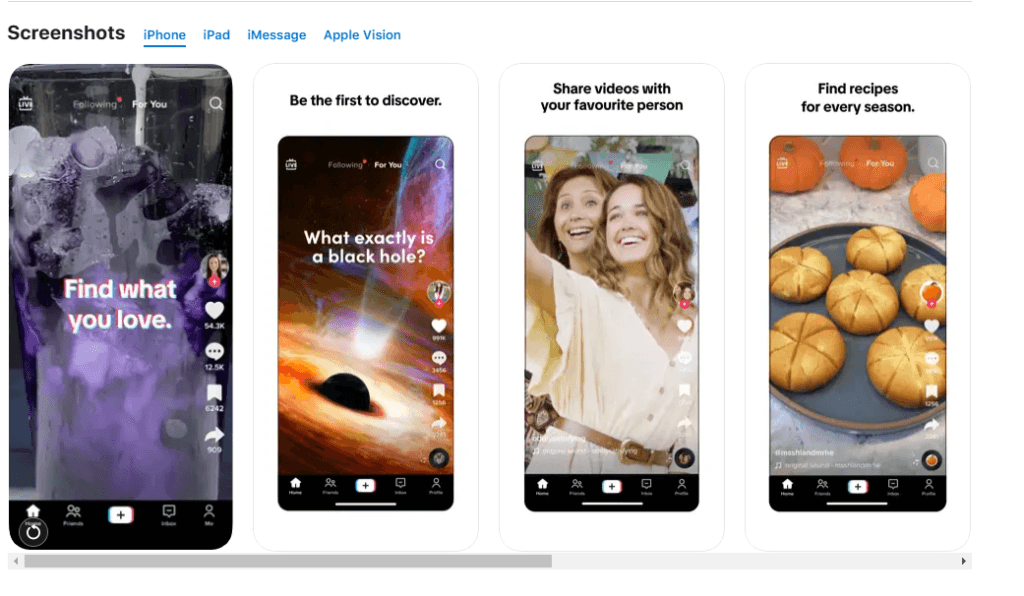
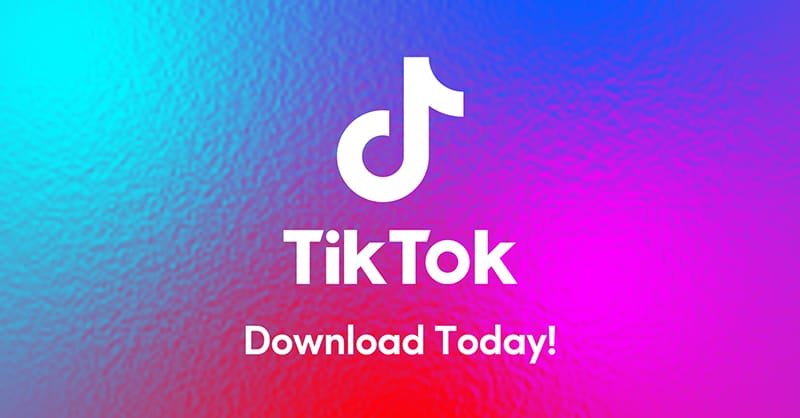
Features of TikTok
It stands out as one of the most engaging social media platforms, thanks to its innovative features that cater to creativity, entertainment, and user interaction. Below are the key features that make TikTok a favorite among millions of users worldwide.
1. Short-Form Video Creation
It allows users to create videos ranging from 15 seconds to 10 minutes, making it ideal for quick, impactful content. This format is perfect for storytelling, tutorials, challenges, and entertainment.
2. Advanced Video Editing Tools
TikTok provides a suite of editing tools directly within the app. Users can add text, transitions, filters, and visual effects to their videos without needing third-party software. These tools make content creation accessible and engaging.

3. Extensive Music and Sound Library
It offers an extensive library of licensed music and audio clips, enabling users to add trending sounds to their videos. This feature has contributed to TikTok’s massive influence in shaping music trends globally.
4. Filters and Augmented Reality Effects
The platform includes numerous filters and augmented reality (AR) effects that let users enhance their videos creatively. From face-tracking animations to background alterations, these effects add a unique touch to content.
5. For You Page (FYP)
The “For You” page is TikTok’s algorithm-driven feed that recommends videos based on user interests and behavior. This personalized feed ensures users are constantly engaged with fresh and relevant content.
6. Interactive Features
It encourages interaction through features like:
- Duets: Allow users to create side-by-side videos with other users.
- Stitch: Lets users integrate clips from other creators into their own content.
- Challenges: Viral challenges that encourage user participation and creativity.
7. Live Streaming
With TikTok LIVE, users can interact with their followers in real-time. It’s a feature popular among creators for Q&A sessions, live performances, and promoting products.

8. Analytics for Creators
Its analytics tools provide insights into video performance, audience engagement, and follower demographics, helping creators optimize their content.
9. E-commerce Integration
It increasingly becoming a hub for social commerce. Features like in-app shopping links and partnerships with brands make it easy for users to discover and purchase products directly through the platform.
TikTok’s Popularity and User Base
TikTok has experienced explosive growth since its launch, becoming one of the most downloaded apps worldwide. Its ability to cater to diverse audiences with engaging, bite-sized videos has made it a cultural phenomenon. From teenagers to celebrities and businesses, TikTok has captured the attention of users across various demographics.
Why Is TikTok So Popular?
Several factors contribute to TikTok’s widespread popularity:
- Ease of Use: TikTok’s intuitive interface makes it easy for anyone to create and share videos.
- Engaging Content: The platform’s focus on entertainment, creativity, and trends keeps users coming back for more.
- Global Reach: TikTok has penetrated markets worldwide, offering content in multiple languages and catering to local trends.
- Addictive Algorithm: The “For You” page ensures users are constantly engaged with content tailored to their interests.

TikTok’s User Demographics
TikTok’s user base is vast and diverse, but certain groups dominate the platform:
- Younger Audiences: A significant portion of TikTok users are under 30, with Gen Z being the largest demographic. The platform appeals to this group with its playful, trend-driven content.
- Global Representation: TikTok has a presence in over 150 countries, making it a truly global platform. Countries like the U.S., India (prior to the ban), and Brazil have some of the highest numbers of active users.
- Creators and Influencers: TikTok has become a launchpad for content creators and influencers, offering opportunities to build massive followings and monetize their presence.

Key Stats Highlighting TikTok’s Popularity
- Monthly Active Users: Over 1 billion users log in to TikTok each month, making it one of the top social media platforms globally.
- Engagement Rates: TikTok boasts higher engagement rates compared to other platforms like Instagram and Twitter.
- Download Milestones: The app has surpassed 3 billion downloads, a testament to its mass appeal.
TikTok’s Role in Popular Culture
Its has had a profound impact on popular culture, driving trends in fashion, music, and lifestyle. Viral challenges, dances, and memes originating on It often spill over to other platforms, influencing how people interact online.

Content Creation on TikTok
Content creation on TikTok is at the heart of its popularity, offering users an easy and engaging way to share their creativity. Whether you’re a casual user, aspiring influencer, or business, TikTok’s tools and features make it simple to create content that resonates with a global audience.
How to Create Content on TikTok
- Recording Videos
It allows users to record videos directly within the app. You can choose from various video durations (15 seconds, 60 seconds, or up to 10 minutes), enabling flexibility for different types of content. - Editing Tools
TikTok offers a variety of built-in editing tools that are user-friendly:- Text Overlays: Add captions, quotes, or annotations to your video.
- Filters and Effects: Enhance your video with visual effects, AR features, and color filters.
- Transitions: Create smooth scene changes for a professional look.
- Using Music and Sounds
A defining feature of TikTok is its extensive sound library. Creators can add trending songs, sound bites, or original audio to make their videos more engaging and relevant. - Incorporating Trends
Participating in trending challenges, dances, or hashtags is a great way to boost visibility on TikTok. These trends often dominate the platform and are key to gaining traction. - Collaborative Features
TikTok’s duet and stitch features enable creators to interact with others by responding to or building on existing videos. These tools encourage collaboration and expand your reach. - Hashtags and Captions
Including relevant hashtags in your captions helps your content appear on users’ For You pages. Popular hashtags related to TikTok trends and challenges can significantly boost discoverability.
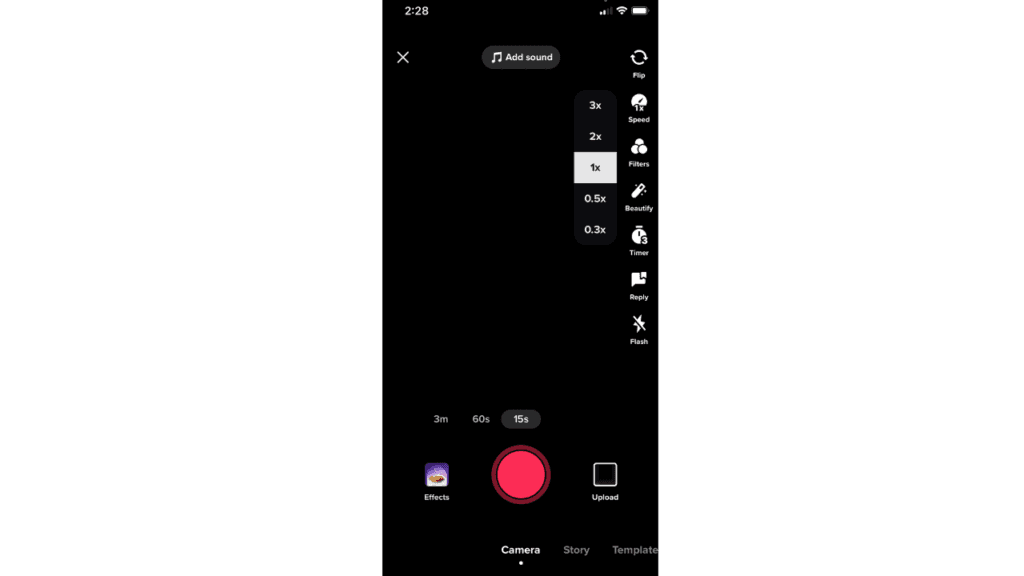
Types of Content That Perform Well on TikTok
- Dance and Music Videos: TikTok gained fame for its viral dances and music-related content.
- Comedy and Skits: Quick, funny videos are widely shared and appreciated.
- Educational Content: Tutorials, how-tos, and life hacks attract users seeking value in short bursts.
- Behind-the-Scenes: Brands and creators often share behind-the-scenes clips to connect with their audience.
- Challenges and Trends: Participating in viral challenges is an effective way to engage with the community.
Tips for Successful Content Creation
- Be authentic and let your personality shine through.
- Keep videos concise and engaging within the first few seconds.
- Experiment with different styles and formats to find what resonates with your audience.
TikTok Algorithm
The TikTok algorithm is a sophisticated system that drives the platform’s highly engaging user experience. It determines which videos appear on each user’s For You Page (FYP) by analyzing various factors to deliver personalized recommendations. Understanding how the TikTok algorithm works can help creators optimize their content for better visibility and engagement.
How the TikTok Algorithm Works
The algorithm relies on several signals to curate content:
- User Interactions
TikTok tracks how users interact with videos, including:- Likes, comments, and shares
- Watch time (how long a user views a video)
- Video completion rates
- Favorites and reposts
- Video Information
The algorithm evaluates details about the content, such as:- Captions and hashtags
- Sounds and music used
- Filters and effects applied
- Device and Account Settings
While less influential, factors like language preferences, location, and device type help TikTok suggest region-specific content. - Diverse Content Exposure
To keep the experience fresh, it introduces videos from new creators, even if they don’t align perfectly with a user’s typical preferences. This gives creators a chance to reach audiences beyond their followers.
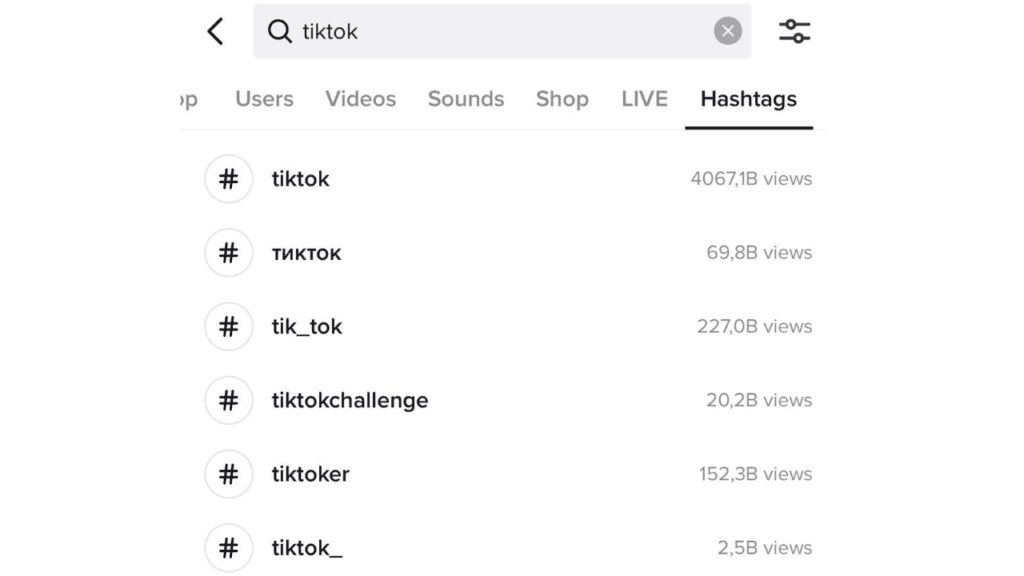
Key Features of the TikTok Algorithm
- Personalized For You Page: Each user’s FYP is unique, showcasing videos that align with their interests.
- Trend Amplification: Content related to trending hashtags or challenges often gets boosted in visibility.
- New Creator Promotion: TikTok’s algorithm gives new accounts opportunities to go viral, making it easier for beginners to gain traction.
- Video Performance Assessment: The algorithm continually evaluates a video’s performance based on its engagement metrics.
Tips for Optimizing Content for the TikTok Algorithm
- Hook Viewers Early: Capture attention within the first few seconds to encourage longer watch times.
- Use Trending Sounds and Hashtags: Aligning your content with current trends increases discoverability.
- Post Consistently: Regular uploads signal to the algorithm that you’re an active creator.
- Encourage Engagement: Use calls-to-action (e.g., “Like for part 2”) to boost interactions.
- Experiment: Test different video styles, formats, and topics to identify what resonates with your audience.
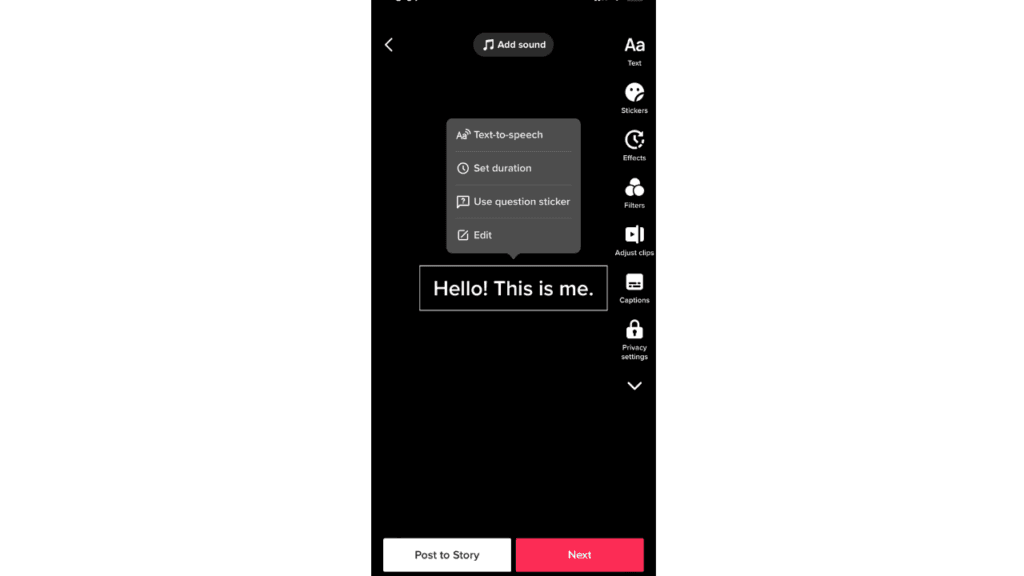
TikTok for Entertainment
It has revolutionized the way people consume and create entertainment. Its short-form video format, engaging trends, and creative tools make it one of the most popular platforms for users seeking instant enjoyment. With endless content tailored to individual preferences, TikTok has become a go-to source for entertainment worldwide.
Why TikTok Is Perfect for Entertainment
- Diverse Content Categories
TikTok hosts an extensive range of entertainment options, including:- Dance routines and challengesComedy skits and memesDIY tutorials and life hacksMusic performances and coversPet and animal videos
- Short-Form Format
TikTok’s short videos are perfect for today’s fast-paced digital consumption habits. Whether you have a few seconds or several minutes, the platform keeps you entertained with content designed for quick viewing. - Viral Trends and Challenges
TikTok is a breeding ground for viral trends. Dance challenges, hashtag-driven content, and comedic formats often go viral, encouraging widespread participation and enjoyment. These trends blur the line between creators and viewers, inviting everyone to join in. - Interactive Entertainment
TikTok’s features like Duets and Stitch allow users to actively engage with the content they love, turning passive entertainment into a collaborative experience. For example, users can duet a funny clip, adding their reaction or spin to it. - Music and Sound Integration
Music plays a pivotal role in TikTok’s entertainment value. Users can sync their videos to trending songs, creating dynamic and catchy content. This feature has also influenced global music charts, as TikTok often boosts songs into popularity.
TikTok’s Impact on Entertainment Culture
- Creators as Stars: It has launched the careers of many creators, turning them into global sensations with millions of fans.
- Crossover Content: Many videos make their way to other platforms like Instagram, Twitter, and YouTube, expanding their reach.
- New Forms of Comedy: TikTok’s short, punchy skits have popularized a unique style of humor that resonates with younger audiences.
Tips for Enjoying TikTok for Entertainment
- Explore the For You Page for a personalized feed of entertaining content.
- Follow trending hashtags to stay updated on the latest challenges and trends.
- Interact with your favorite creators through comments, likes, and duets.
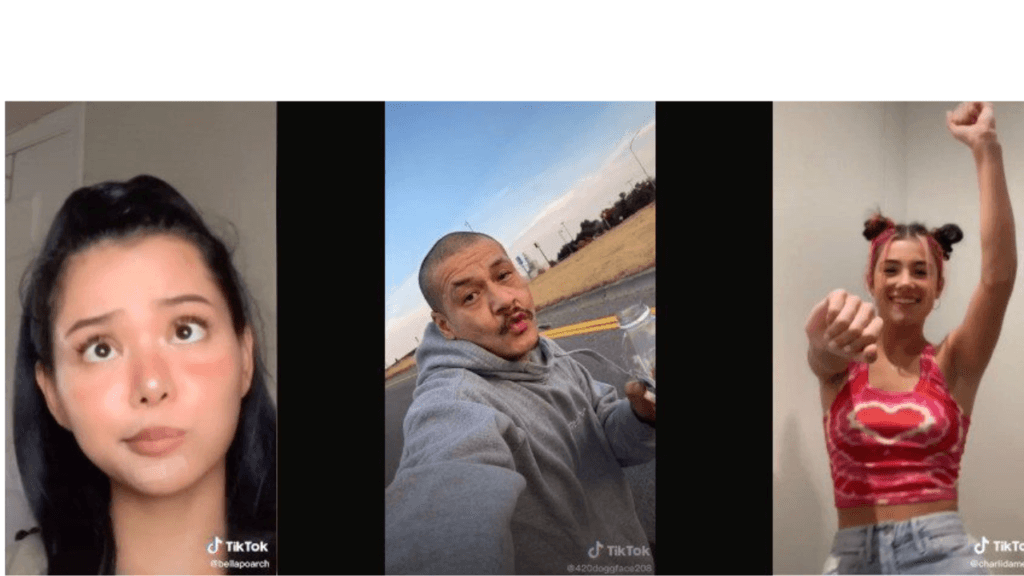
TikTok for Businesses
TikTok has quickly evolved from a platform for personal entertainment to a powerful marketing tool for businesses. With its massive, engaged user base, creative features, and viral potential, TikTok offers companies unique opportunities to reach new audiences, build brand awareness, and drive sales.

Why TikTok Is Essential for Businesses
- Vast Audience Reach
With over 1 billion active users globally, TikTok offers businesses the chance to reach a wide, diverse audience. This includes younger demographics, particularly Gen Z and Millennials, who are increasingly harder to reach through traditional advertising channels. - High Engagement Rates
TikTok’s algorithm ensures that content with high engagement gets pushed to a larger audience, meaning businesses can enjoy viral exposure without paying for ads. The interactive nature of the platform also encourages more meaningful engagement through likes, shares, and comments. - Authentic Content
TikTok’s emphasis on creativity and authenticity makes it ideal for businesses to show a more human side. Companies can connect with audiences by posting behind-the-scenes content, showcasing employee stories, or even participating in trends that align with their brand values. - Cost-Effective Marketing
While paid ads on TikTok are available, businesses can gain significant traction with organic content, often at a lower cost than on other platforms. By creating compelling, shareable videos, businesses can tap into organic growth and word-of-mouth marketing. - Targeted Advertising
TikTok’s paid advertising options allow businesses to run targeted campaigns based on user demographics, interests, and behavior. This ensures that ads reach the most relevant audience, maximizing ROI. - E-Commerce Integration
TikTok has introduced shopping features that allow businesses to sell products directly within the app. TikTok’s Shop Now buttons and partnerships with platforms like Shopify make it easy for users to purchase products they discover through videos.
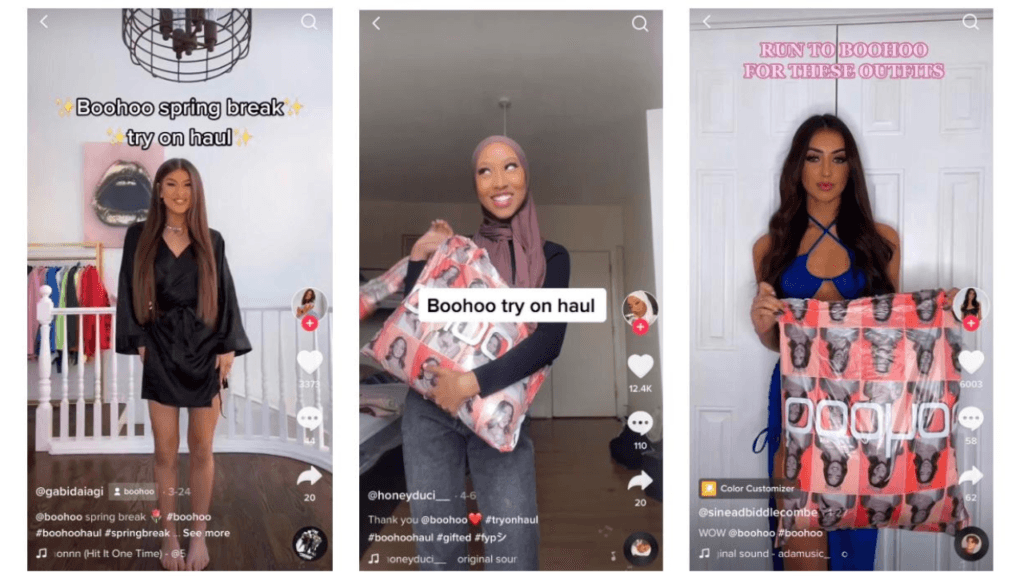
Types of TikTok Content for Businesses
- Product Demos: Short, engaging videos that showcase products in action.
- Tutorials and How-To Guides: Educational content that highlights how to use products or services.
- Behind-the-Scenes: Humanize your brand by showing the process behind creating your products or services.
- User-Generated Content: Encourage customers to create content featuring your products, which can be shared on your page.
- Challenges and Trends: Create branded challenges or participate in viral trends to increase visibility and engagement.
Best Practices for Businesses on TikTok
- Be authentic: Avoid overly polished, sales-driven content and focus on fun, genuine interactions.
- Post regularly: Consistency is key to staying visible on the platform.
- Use Hashtags: Leverage trending hashtags to boost the discoverability of your content.
- Engage with Users: Respond to comments and messages to build stronger relationships with your audience.
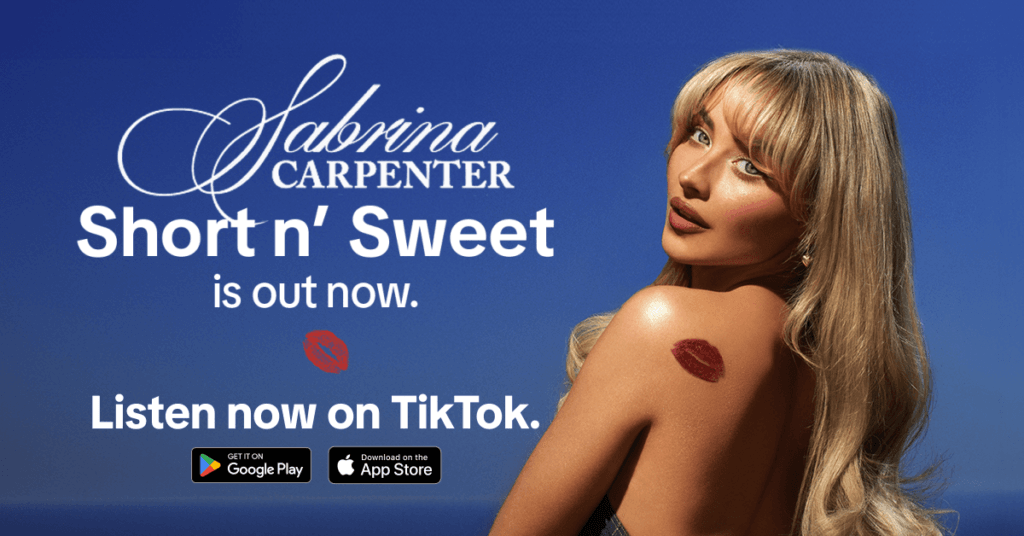
TikTok’s Impact on Culture
TikTok has become more than just a platform for entertainment – it has significantly shaped global culture in recent years. From influencing music and fashion to creating viral trends and social movements, TikTok’s fast-paced, interactive format has redefined how we consume and create cultural content.
Shaping Music and Trends
One of the most profound ways TikTok has impacted culture is through its influence on music. Songs that go viral on the platform often chart on global music lists. Here’s how TikTok has shaped the music industry:
- Viral Songs and Challenges
TikTok’s short-video format encourages users to create content synced to trending songs, which in turn drives those songs to popularity. Tracks like “Old Town Road” by Lil Nas X and “Savage Love” by Jawsh 685 & Jason Derulo gained immense success due to viral TikTok videos. - New Artists and Breakout Hits
For many emerging artists, TikTok is a platform to gain exposure and launch their music careers. Artists can release songs that catch on through challenges or user-generated content, leading to chart-topping hits. - Revival of Old Hits
TikTok has also brought older songs back into the spotlight. Classic tracks from past decades often go viral again after being featured in trends, reminding users of music they may not have thought about in years.
Influencing Fashion and Beauty
TikTok has rapidly become a space where fashion and beauty trends are born. Users, influencers, and brands post videos showcasing the latest styles, makeup tutorials, and fashion hacks, influencing global fashion trends.
- Viral Fashion Trends
From thrift hauls to high-fashion runway looks, TikTok’s influence on fashion is undeniable. The platform is filled with users showing off their personal style, inspiring millions to try new trends or recreate looks. - Beauty Tutorials and Hacks
Beauty influencers use TikTok to share makeup tutorials, skincare routines, and haircare tips. These videos often go viral, driving trends in the beauty industry. For example, makeup challenges and transformations have taken off, encouraging users to try bold and creative looks.
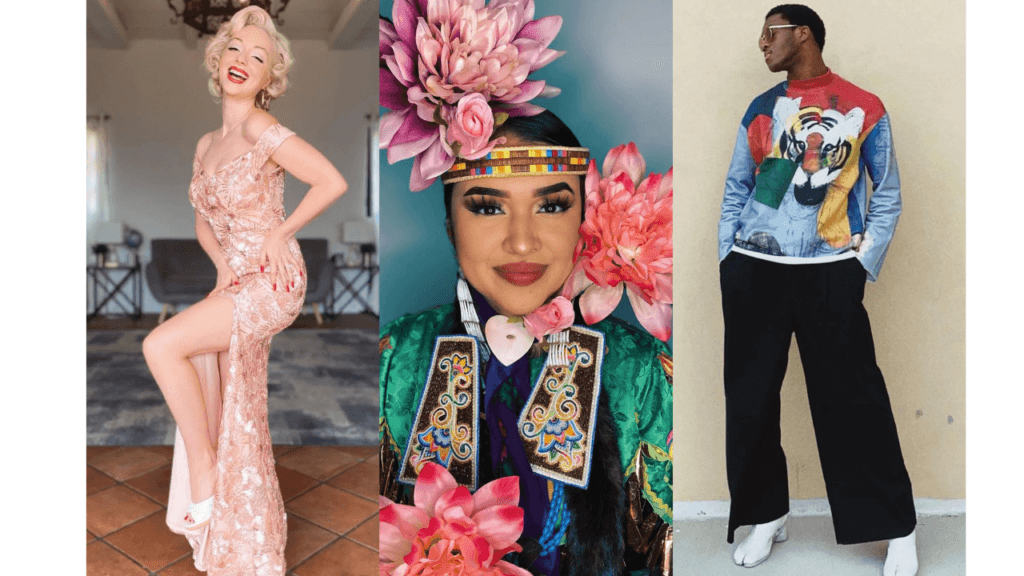
Creating Social Movements
TikTok has also become a platform for social change. Through viral videos and hashtag campaigns, the platform has amplified voices and driven awareness on a variety of social and political issues.
- Activism and Awareness
TikTok’s ability to spread messages quickly has made it a tool for activism. Movements like Black Lives Matter, climate change awareness, and mental health advocacy have gained visibility through TikTok campaigns. - Fostering Inclusivity and Representation
TikTok has provided a space for marginalized communities to share their stories and experiences, fostering inclusivity. The platform is known for promoting diverse voices, creating a more representative online culture.
TikTok as a Cultural Reflection
Beyond trends and movements, TikTok serves as a mirror to society. It reflects the interests, concerns, and humor of its users, capturing a snapshot of contemporary culture. The platform gives insight into the values and behaviors of different age groups and regions, offering a real-time reflection of cultural shifts.
Tips for Navigating TikTok’s Cultural Landscape
- Stay updated with the latest trends by regularly checking the For You Page.
- Participate in viral challenges to engage with the cultural zeitgeist.
- Engage with diverse creators and trends to broaden your cultural understanding.
Suggested Image Placement
- Viral Music Trends: Screenshots of popular TikTok videos featuring viral songs.
- Fashion Trends: A collage of TikTok users showcasing trendy outfits or fashion challenges.
- Social Movements on TikTok: An image highlighting hashtags related to activism, like #BlackLivesMatter or #ClimateAction.
- Cultural Snapshot: A visual of a diverse group of TikTok creators representing various cultures, emphasizing the platform’s inclusivity.
These images will visually demonstrate how TikTok influences and reflects culture, making the section more engaging and informative.
Monetization Opportunities on TikTok
TikTok offers a wide range of monetization opportunities for creators, businesses, and influencers looking to turn their content into income. From brand partnerships to in-app features, the platform provides various ways to earn money while engaging with a global audience. In this section, we’ll explore how TikTok users can leverage these opportunities to make money.
1. TikTok Creator Fund
The TikTok Creator Fund is a program that pays creators based on the engagement and performance of their videos. To join, creators must meet certain eligibility criteria, including a minimum number of followers and video views. Once accepted, TikTok pays creators for their content, though earnings depend on factors such as video views, engagement, and authenticity of interactions.
- How it works: The Creator Fund distributes payments based on engagement, with higher-performing content earning more.
- Eligibility: Creators must have at least 10,000 followers and 100,000 video views in the last 30 days.
2. Brand Partnerships and Sponsored Content
One of the most lucrative ways to monetize on TikTok is through brand partnerships. Businesses are eager to collaborate with popular creators who have a large, engaged following. By creating sponsored content, creators can promote products or services in exchange for payment.
- How it works: Brands often approach influencers for product placements or to participate in challenges. Creators can negotiate payment based on their follower count, engagement rate, and niche.
- Best for: Influencers, businesses, and creators with a strong personal brand or niche.
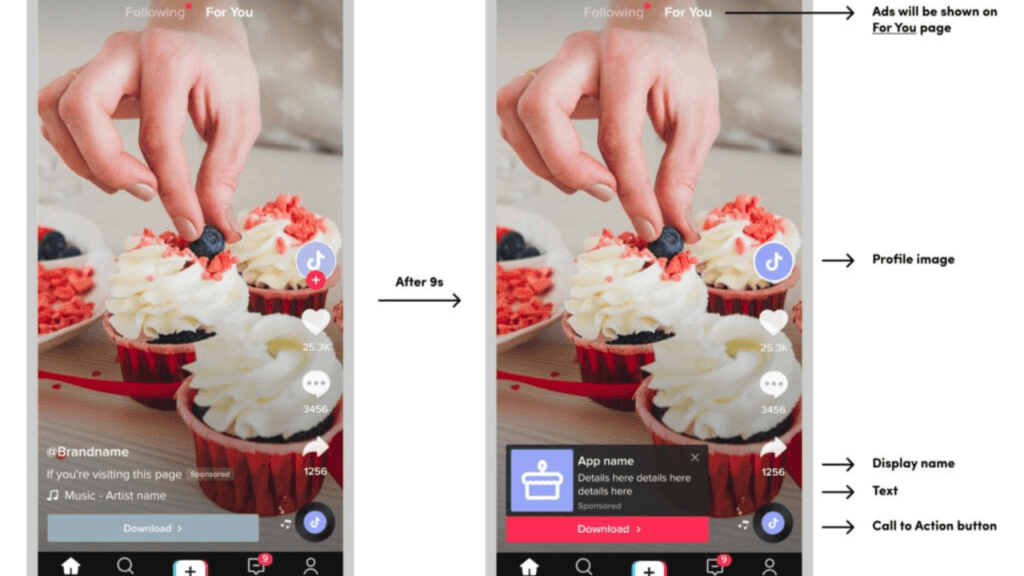
3. TikTok Live Gifts
TikTok allows creators to earn money during live streams through virtual gifts. Viewers can send gifts, which are purchased with TikTok coins, and these gifts can be converted into real money. Creators can engage with their audience in real-time and encourage viewers to send gifts as a form of support.
- How it works: During a live broadcast, viewers can purchase and send gifts such as diamonds, roses, and panda emojis. These gifts can then be converted into cash.
- Eligibility: Creators must be over 18 years old and have at least 1,000 followers to start live streaming.
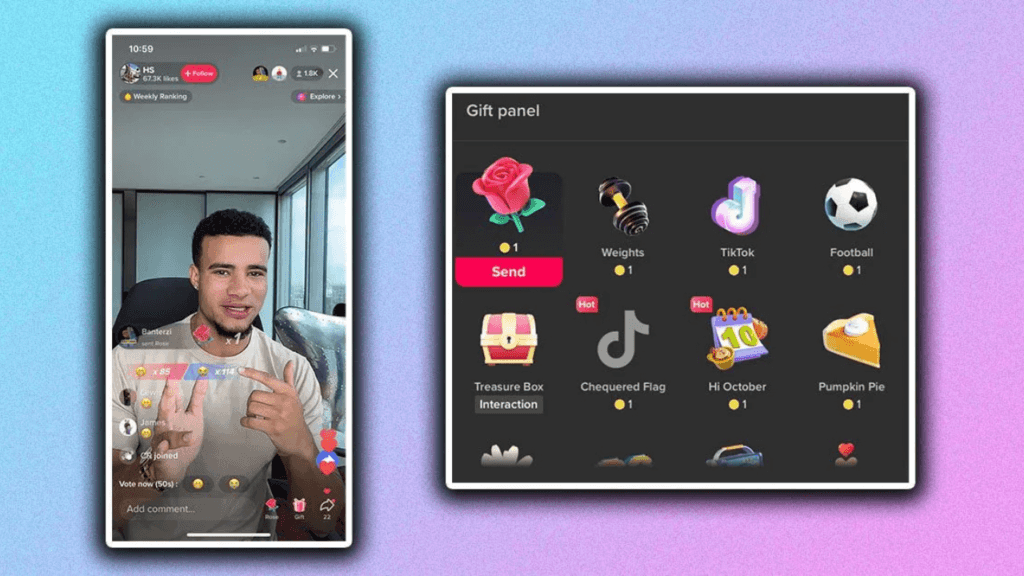
4. Affiliate Marketing
Creators on TikTok can use their platform to promote products and services through affiliate marketing. By sharing unique affiliate links in their videos or bio, creators can earn a commission on any sales made through those links.
- How it works: Affiliates partner with brands to promote products. When followers purchase through the affiliate link, the creator earns a commission.
- Best for: Creators with an established audience interested in specific products or services.
5. Selling Products via TikTok Shop
TikTok’s integration with e-commerce allows creators and businesses to sell products directly through the app via the TikTok Shop. Creators can showcase their merchandise, beauty products, or services, and users can purchase them without leaving the app.
- How it works: Sellers can set up a store, upload their product listings, and promote them in TikTok videos. Purchases are processed directly on the platform.
- Best for: Businesses, creators with personal merchandise, and influencers looking to monetize products directly.
6. TikTok Ads
For businesses, running TikTok Ads is a powerful way to reach a targeted audience and drive sales. TikTok offers different types of ad formats, including in-feed ads, branded hashtag challenges, and sponsored effects. Businesses can leverage these ads to promote products and services in front of millions of active users.
- How it works: Businesses create targeted ad campaigns based on interests, location, and demographics to increase visibility and sales.
- Best for: Companies looking to expand their reach through paid advertisements on TikTok.

7. Subscription Features
TikTok has introduced a Subscription feature that allows users to pay a monthly fee to support their favorite creators. In exchange, subscribers may get access to exclusive content, badges, and other perks.
- How it works: Creators can set up a subscription program, offering content behind a paywall. Subscribers receive special access to live streams or posts.
- Eligibility: This feature is available to select creators and may vary by region.
Privacy and Security on TikTok
As with any social media platform, privacy and security are important considerations when using TikTok. Due to its global reach and massive user base, the app has faced scrutiny over how it handles user data and protects personal information. However, TikTok has implemented several measures to safeguard privacy and security while maintaining transparency for users.
Data Privacy Concerns
TikTok has been subject to concerns about how it collects, stores, and uses user data. Since it is owned by the Chinese company ByteDance, there have been questions regarding the possibility of data being shared with the Chinese government. While TikTok has denied such claims and clarified its data storage practices, it’s important for users to understand what data is collected and how it is used.
- What data does TikTok collect?
- Personal information: This includes your name, email address, phone number, and device information.
- Usage data: TikTok tracks the content you engage with, the time spent on the platform, and your interactions with other users.
- Location data: TikTok may collect location data, which is used for targeted content and ads.
TikTok’s Data Security Measures
Despite concerns, TikTok has implemented various security protocols to protect user data:
- Data Storage: TikTok stores user data in secure servers located in different regions, including the U.S. and Singapore.
- Encryption: TikTok uses encryption methods to protect data while it’s being transferred over the internet.
- Regular Audits: TikTok conducts regular security audits to ensure that its platform complies with data protection regulations and standards.

User Control Over Privacy
TikTok provides a variety of tools to help users manage their privacy settings and control who can see their content:
- Private Accounts: By setting your account to private, only approved followers can view your videos and interact with you.
- Restricted Content Sharing: You can control who can comment on your videos, who can send you messages, and who can duet with you.
- Data Settings: TikTok allows users to adjust location settings, and opt-out of personalized ads, or limit data sharing with third parties.
- Parental Controls: TikTok has launched Family Pairing, a feature that allows parents to manage their children’s account settings, including screen time limits and privacy settings.
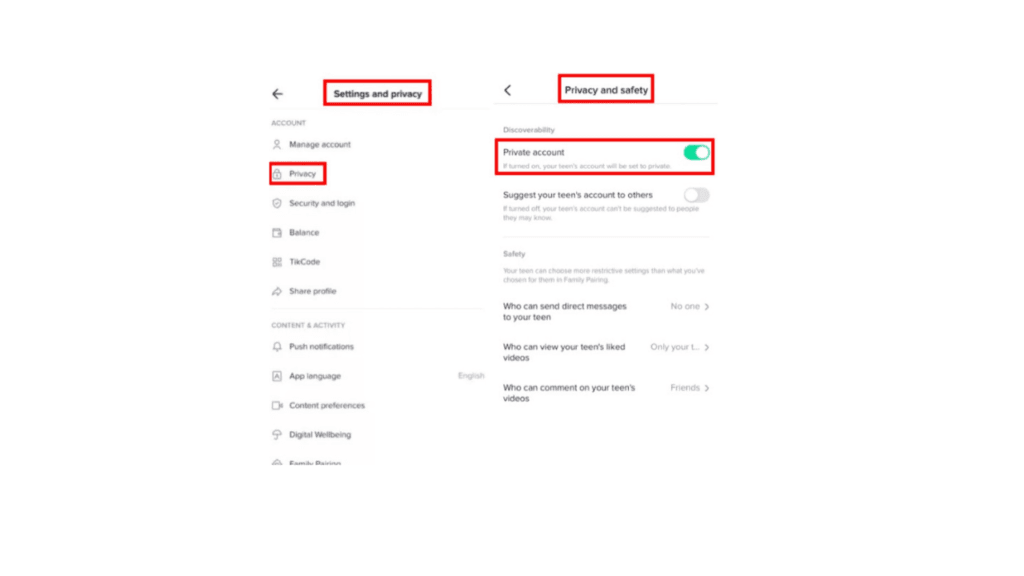
TikTok’s Efforts to Protect Younger Users
Given that TikTok is particularly popular with younger audiences, the platform has implemented additional measures to safeguard minors:
- Age Restrictions: TikTok has strict age restrictions, requiring users to be at least 13 years old to sign up.
- Default Privacy Settings for Minors: Accounts belonging to users aged 13-15 are set to private by default, and they cannot allow anyone to send direct messages.
- Limitations on Content Discovery: TikTok limits the exposure of videos created by minors in the “For You Page” for added privacy.
Reporting and Blocking Features
TikTok provides robust reporting and blocking tools to help users maintain a safe and respectful environment:
- Reporting Content: Users can report inappropriate content, harassment, or violations of TikTok’s community guidelines.
- Blocking: Users can block accounts to prevent them from following, messaging, or commenting on their videos.
- Restricting Comments: Users can choose who is allowed to comment on their posts, including limiting comments to followers or disabling them entirely.
Best Practices for Protecting Your Privacy on TikTok
- Review privacy settings regularly: Make sure your account settings reflect the level of privacy you’re comfortable with.
- Be mindful of personal information: Avoid sharing sensitive details like your home address, phone number, or financial information in your videos or bio.
- Use strong passwords: Secure your account with a strong, unique password and enable two-factor authentication for added security.
- Monitor your content: Regularly review the videos you’ve posted to ensure that they don’t unintentionally reveal personal information.
Competitors and Alternatives
While TikTok has become a dominant force in the social media world, there are several competitors and alternatives that offer similar features, content creation tools, and audience engagement. Whether you’re looking for a platform with a different focus or simply exploring other options, it’s important to understand how these alternatives compare to TikTok in terms of features, user experience, and popularity. In this section, we’ll discuss some of the leading competitors to TikTok and how they stack up.
1. Instagram Reels
Instagram Reels is one of the most popular alternatives to TikTok, offering a similar short-form video format. Instagram, a well-established social media platform, launched Reels as a direct response to TikTok’s success. While Reels shares many features with TikTok, it benefits from Instagram’s existing user base and integration with other features such as Stories and Shopping.
- Key Features:
- Video length: Up to 90 seconds
- Integration with Instagram’s existing features
- Advanced editing tools and effects
- Access to Instagram’s large user base
- Comparison to TikTok:
While both platforms allow users to create and share short videos, TikTok’s algorithm is more focused on content discovery, often pushing videos from lesser-known creators to a wider audience. Instagram Reels, on the other hand, often prioritizes content from users’ followers and accounts they already engage with.
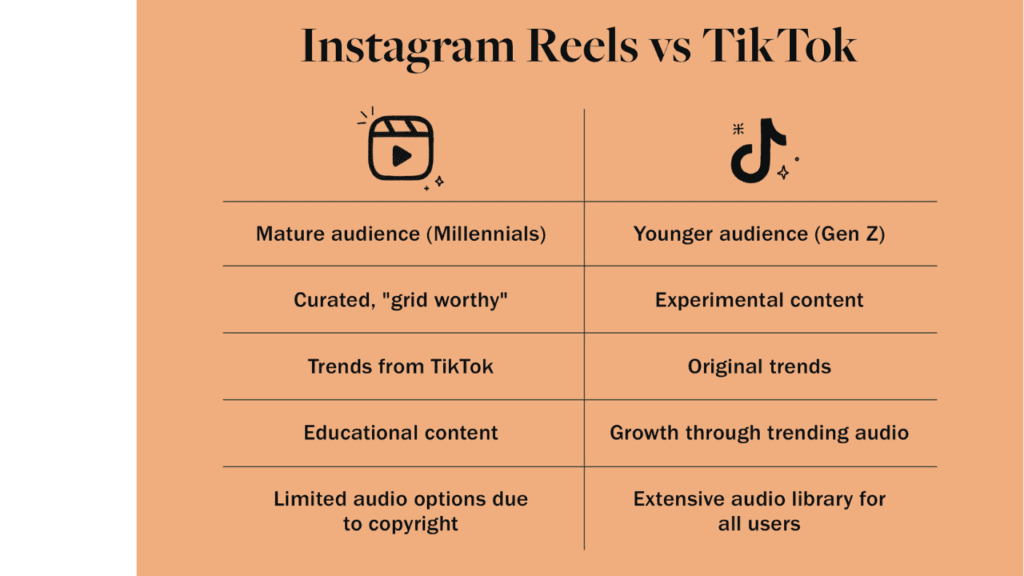
2. YouTube Shorts
YouTube Shorts is YouTube’s answer to TikTok, providing a platform for creators to share short, vertical videos. As YouTube has a massive user base and established content creators, Shorts benefits from the platform’s vast ecosystem and monetization options, including ad revenue and Super Chats during live streams.
- Key Features:
- Video length: Up to 60 seconds
- Integration with YouTube’s existing features
- Access to YouTube’s massive user base and monetization tools
- Strong focus on discovery through YouTube’s algorithm
- Comparison to TikTok:
YouTube Shorts tends to attract a slightly older audience compared to TikTok and offers more robust monetization opportunities. However, TikTok’s algorithm is better at surface-level content discovery and driving viral trends. YouTube Shorts, meanwhile, allows creators to connect with their existing YouTube audience more seamlessly.
3. Snapchat Spotlight
Snapchat Spotlight is Snapchat’s version of short-form video content, offering a platform for users to create, share, and explore bite-sized videos. Spotlight aims to capture the essence of TikTok’s viral trends, with a focus on quick and casual content. While Snapchat has lost some popularity among younger users to TikTok, Spotlight offers an alternative for those already active on the platform.
- Key Features:
- Video length: Up to 60 seconds
- Focus on user-generated content
- Opportunities for creators to earn money through the Spotlight fund
- Integration with Snapchat’s messaging and AR features
- Comparison to TikTok:
Snapchat Spotlight is a more niche alternative compared to TikTok, especially because Snapchat’s user base is primarily made up of younger users. While TikTok is known for its content discovery algorithm, Spotlight relies more on content created within the Snapchat community.
4. Triller
Triller is a direct competitor to TikTok, offering similar features for video creation, editing, and sharing. Known for its powerful editing tools and professional-level filters, Triller attracts users who want to create highly-polished, cinematic videos. It’s a popular choice among musicians and influencers who want to create more polished music videos.
- Key Features:
- Video length: Up to 60 seconds
- Advanced video editing tools and effects
- Music integration and licensing
- Monetization options for creators
- Comparison to TikTok:
Triller is more focused on music videos and offers a different editing experience compared to TikTok’s easy-to-use interface. While TikTok has a more extensive range of viral challenges and trends, Triller’s user base is smaller but dedicated to content creation and music.
5. Dubsmash
Dubsmash is one of the earliest platforms to popularize short video content before TikTok’s rise. The app allows users to lip-sync to popular songs, movie quotes, and audio clips. While its popularity has waned compared to TikTok, it still attracts users who enjoy creative lip-syncing videos.
- Key Features:
- Video length: Up to 10 minutes (in some cases)
- Focus on lip-syncing and audio-based content
- Simple video editing tools
- Integration with music and popular sound clips
- Comparison to TikTok:
Unlike TikTok, Dubsmash is less focused on content discovery and viral trends. While it has a more niche user base, it offers a similar content creation experience. TikTok is far more advanced in terms of algorithm-driven discovery and social engagement.
6. Clash
Clash is a relatively new platform created by former Vine star Dom Hofmann. It focuses on providing creators with a platform for monetizing their content directly. While not as well-known as TikTok, Clash has been marketed as a creative space where content creators can control how they earn from their work.
- Key Features:
- Video length: Similar to TikTok’s short videos
- Creator-centric monetization options
- Focus on building a dedicated community around content creators
- Limited features compared to TikTok and Instagram
- Comparison to TikTok:
Clash is much smaller in scale compared to TikTok but offers an interesting alternative for creators looking for more control over their monetization. TikTok has a far larger audience and a more established platform for viral content discovery.
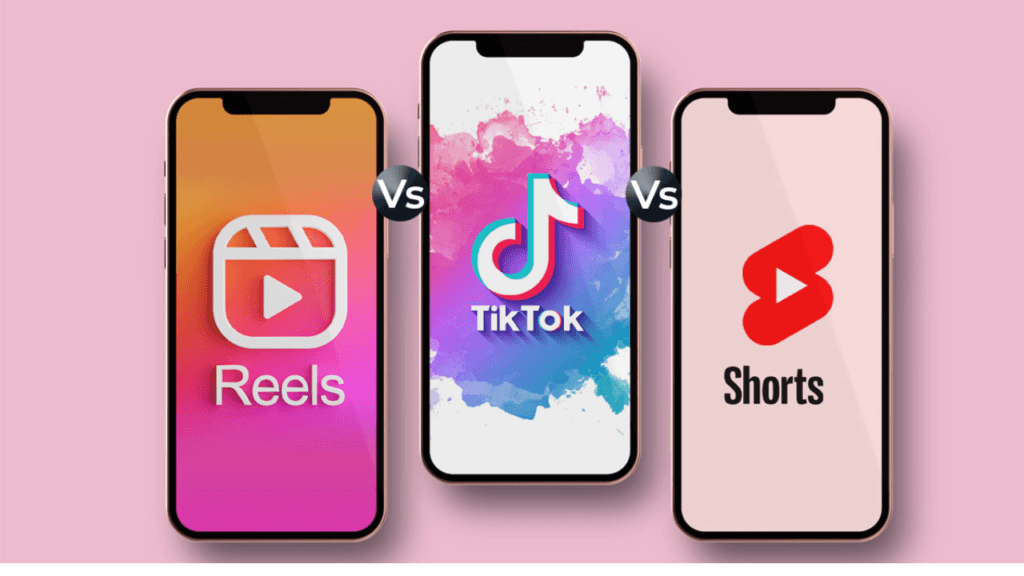
TikTok’s Role in Digital Marketing
TikTok has rapidly become a powerful platform in the world of digital marketing, offering businesses a unique opportunity to reach a vast and engaged audience through creative content. As a short-form video app, TikTok allows brands to build awareness, drive engagement, and even increase sales by tapping into the platform’s viral nature. In this section, we’ll explore TikTok’s role in digital marketing and how businesses can leverage its features to promote their products and services effectively.
1. Reaching a Massive and Engaged Audience
One of TikTok’s most significant advantages for digital marketing is its vast and highly engaged user base. With over 1 billion active users worldwide, TikTok provides a platform for brands to reach a broad audience across different demographics. While the app is especially popular with younger users, its audience continues to diversify, making it a valuable tool for businesses targeting various age groups.
- Key Advantage:
- TikTok’s algorithm promotes content discovery, allowing brands to reach users beyond just their followers, increasing organic reach.
- The app’s interactive features, such as likes, shares, comments, and duets, encourage high engagement from users, helping brands connect with their audience in creative ways.
2. TikTok Ads and Campaigns
For businesses looking to invest in paid promotion, TikTok Ads offer a wide range of options to suit different marketing goals. These ad formats allow brands to promote their products directly in users’ feeds, boosting visibility and encouraging engagement.
- Ad Formats Available on TikTok:
- In-Feed Ads: These ads appear in users’ For You Page (FYP), blending seamlessly with organic content.
- Branded Hashtag Challenges: Brands create challenges and encourage users to create their own content around a specific hashtag, promoting user-generated content and virality.
- TopView Ads: These are full-screen ads that appear when users first open the app, offering maximum visibility.
- Branded Effects: Brands can create augmented reality (AR) effects that users can apply to their videos, boosting brand awareness and engagement.
- Targeting Capabilities:
- TikTok’s advanced targeting options allow businesses to reach specific audiences based on demographics, interests, behaviors, and location, ensuring that ads are seen by the most relevant users.
3. Influencer Marketing on TikTok
TikTok is a hub for influencers, many of whom have large, dedicated followings. Collaborating with influencers on the platform is an effective way for brands to amplify their message and connect with their target audience authentically. TikTok influencers can create sponsored content that feels natural and blends in with the app’s overall vibe, driving high engagement and brand awareness.
- How Influencer Marketing Works on TikTok:
- Brands partner with influencers to create content that highlights their products or services in a fun, engaging way.
- Influencers often participate in challenges, use branded hashtags, or create unique videos to promote a brand.
- Influencer partnerships on TikTok are particularly valuable because they help build trust with users and create content that resonates with the audience.
4. User-Generated Content (UGC)
One of the most powerful aspects of TikTok as a digital marketing tool is its emphasis on user-generated content. TikTok’s viral nature makes it easy for users to share their own experiences with brands, products, or services, amplifying brand messages through authentic content.
- How UGC Benefits Brands:
- When users create content around a brand, it increases the trust and credibility of that brand.
- UGC campaigns can go viral, giving brands the opportunity to gain massive exposure without relying solely on paid advertising.
- Encouraging UGC through branded hashtag challenges, for example, can lead to a more organic connection with the target audience.
5. Building Brand Awareness Through Trends
TikTok’s ever-evolving trends are a goldmine for digital marketing. Trends on TikTok often evolve rapidly, and brands that participate in trending challenges or use popular sounds can gain significant attention and engagement. By aligning with trends, businesses can tap into a large audience and position themselves as part of the conversation.
- How to Use Trends for Marketing:
- Participate in viral challenges or create your own brand-specific challenge to engage users.
- Incorporate trending music, hashtags, or formats into your content to increase visibility.
- Create content that feels organic and authentic to TikTok’s community, rather than overly promotional.
6. E-Commerce Integration and TikTok Shop
TikTok is increasingly integrating e-commerce features, making it easier for businesses to drive sales directly through the platform. With TikTok Shop, businesses can showcase and sell products directly within the app, providing a seamless shopping experience for users.
- TikTok Shop Features:
- Businesses can set up a TikTok Shop to display products in their profile or through videos.
- Users can browse products and make purchases without leaving the app, creating a smooth e-commerce experience.
- Brands can use TikTok’s interactive features to drive traffic to their products and boost conversions.
7. Measuring Campaign Success on TikTok
TikTok provides businesses with robust analytics tools to measure the success of their digital marketing campaigns. These tools allow brands to track key performance metrics, such as video views, engagement rates, follower growth, and conversions, helping them optimize their strategies and achieve their marketing goals.
- Key Metrics to Track:
- Engagement: Likes, comments, shares, and overall interactions with content.
- Impressions and Reach: The number of people who have seen the content.
- Conversions and Sales: Tracking sales from TikTok ads or TikTok Shop.
- Follower Growth: Monitoring changes in your follower count after running ads or campaigns.

Legal and Ethical Considerations
As with any social media platform, using TikTok for content creation, marketing, and engagement comes with its own set of legal and ethical considerations. From privacy concerns to intellectual property rights, businesses and creators must be aware of the regulations and guidelines that apply when using TikTok. In this section, we’ll explore the key legal and ethical issues related to TikTok, and what both creators and businesses need to keep in mind when using the platform.
1. Privacy and Data Protection
One of the most significant legal concerns surrounding TikTok is the collection and use of user data. As a social media platform, TikTok collects data about users’ behaviors, preferences, location, and device details. This data is used to improve user experience and target advertisements. However, this raises important privacy issues, especially regarding minors and how their data is handled.
- Key Considerations:
- TikTok is required to comply with data protection laws, such as the General Data Protection Regulation (GDPR) in Europe and the Children’s Online Privacy Protection Act (COPPA) in the United States, to ensure the privacy of its users, particularly minors.
- Businesses and creators must understand TikTok’s privacy policy and data practices to avoid violating privacy laws when running ads or engaging with followers.
- If collecting personal information from users, such as emails or phone numbers, it is crucial to get explicit consent and follow privacy regulations.
2. Copyright and Intellectual Property
TikTok is known for its extensive use of music, video clips, and other copyrighted content. While the platform provides tools to access a wide library of licensed music, creators and businesses must still be cautious about copyright infringement.
- Key Considerations:
- Use of Music and Audio Clips: Users can access a wide range of music on TikTok, but it is essential to make sure the tracks being used are licensed for commercial use if you are promoting a product or service. Using unlicensed music for business purposes can result in legal consequences, such as content removal or fines.
- Copyrighted Content: When using third-party content (such as videos, images, or audio), it’s important to obtain the proper permissions. Failing to respect copyright laws could lead to legal action from the original content creator or copyright holder.
- Intellectual Property Ownership: If creating original content, be aware of ownership rights. TikTok’s terms of service specify that by uploading content, users grant TikTok a license to use that content, but creators still maintain ownership. Businesses should also ensure that any branded content complies with intellectual property rights, including logos, trademarks, and other proprietary assets.
3. Disclosures and Transparency
In digital marketing, transparency is critical, especially when it comes to sponsored content and influencer partnerships. TikTok has specific rules around sponsored content and advertising to ensure that users are aware when content is being promoted.
- Key Considerations:
- Creators must disclose paid partnerships, sponsorships, or promotional content clearly to avoid misleading followers. This is in line with the Federal Trade Commission (FTC) guidelines, which require influencers to mark content as “sponsored” or “paid partnership.”
- Businesses that work with influencers or run TikTok ads must ensure that influencers follow disclosure guidelines. Failure to do so could result in penalties or damage to a brand’s reputation.
- Hashtag Guidelines: Use hashtags like #ad or #sponsored to indicate when a post is part of a paid promotion or collaboration.
4. User Safety and Content Moderation
TikTok has taken steps to address issues surrounding user safety, including measures to protect minors, prevent cyberbullying, and limit the spread of harmful or inappropriate content. However, users must be mindful of the platform’s community guidelines and ensure their content does not violate any rules.
- Key Considerations:
- Businesses should avoid posting content that could be seen as harmful, offensive, or inappropriate, as TikTok has strict rules against bullying, hate speech, and graphic content.
- Content creators should avoid engaging in behavior that could lead to harassment or exploitation, particularly when dealing with vulnerable groups such as children or teenagers.
- TikTok’s content moderation system, combined with user reporting, helps ensure that harmful content is flagged and removed promptly, but businesses should be proactive in ensuring their content aligns with TikTok’s guidelines.
5. Discriminatory Practices and Ethical Marketing
Ethical marketing is crucial to maintaining brand integrity and fostering trust with audiences. TikTok’s diverse user base means that businesses must be especially sensitive to cultural, racial, and social considerations when creating content.
- Key Considerations:
- Avoid using stereotypes or offensive language that could alienate or harm certain groups.
- Ensure that marketing campaigns do not take advantage of vulnerable audiences or promote harmful products or behaviors.
- Be mindful of cultural appropriation and respect the cultural significance of trends, symbols, and imagery used in content.
6. Legal Regulations for Paid Content and Ads
TikTok provides businesses with various ad types to promote products or services. However, advertisers must ensure their campaigns comply with legal regulations, particularly in areas such as consumer protection, advertising standards, and truth in advertising.
- Key Considerations:
- Ads on TikTok must not be misleading or deceptive. All claims about a product or service should be substantiated.
- Ad targeting should be done ethically, ensuring that ads do not exploit vulnerable or underserved populations.
- Be aware of the specific advertising regulations in different regions, including country-specific restrictions on certain types of ads (e.g., alcohol, tobacco, or health-related products).
TikTok’s Challenges and Criticisms
While TikTok has become a major force in social media, it has also faced a number of challenges and criticisms since its rise to popularity. These issues range from concerns over privacy and data security to accusations of fostering negative behaviors and content. In this section, we’ll explore some of the key challenges and criticisms TikTok has faced and how these issues impact both users and businesses on the platform.
1. Privacy Concerns and Data Security
One of the most persistent criticisms of TikTok is its handling of user data. The platform collects vast amounts of personal information from its users, including location data, search history, and user interactions. This has raised significant privacy concerns, especially in countries where data protection laws are strict.
- Key Concerns:
- Data Collection Practices: Critics argue that TikTok collects more personal data than is necessary for the app’s functionality, which could potentially be misused.
- Connection to China: Due to TikTok’s parent company, ByteDance, being based in China, there have been concerns about the Chinese government potentially accessing user data.
- Government Scrutiny: TikTok has faced government scrutiny in multiple countries, including the U.S. and India, with some governments considering banning the app due to national security concerns.
Businesses and creators need to be aware of these concerns when using TikTok, especially in regions with strong privacy laws like the EU (GDPR) or California (CCPA). Adhering to privacy regulations and being transparent about data usage can help mitigate these concerns.
2. Addiction and Mental Health Issues
Another major criticism of TikTok is its potential to contribute to addiction and negatively impact users’ mental health. The app’s algorithm is designed to keep users engaged for long periods, with the constant stream of new and engaging content. This can lead to compulsive use and excessive screen time, especially among younger users.
- Key Concerns:
- Impact on Mental Health: Some studies suggest that excessive use of social media platforms like TikTok can lead to anxiety, depression, and low self-esteem, particularly among teenagers and young adults.
- Body Image Issues: TikTok has also been criticized for contributing to unrealistic beauty standards, with some users feeling pressured to conform to certain physical appearances in order to gain attention or approval.
- Addictive Nature of the Platform: The algorithm’s personalized content feed is specifically designed to keep users engaged, which some argue can contribute to addiction and hinder productivity.
Businesses should be mindful of these concerns when creating content on TikTok, ensuring that their marketing practices do not exploit vulnerable users or encourage harmful behaviors.

3. Content Moderation and Inappropriate Material
Despite its best efforts, TikTok has faced criticism over its ability to effectively moderate harmful or inappropriate content. While the platform has implemented guidelines to prevent the spread of hate speech, misinformation, and explicit content, some inappropriate material still slips through the cracks.
- Key Concerns:
- Hate Speech and Cyberbullying: TikTok has struggled with eliminating toxic content, such as hate speech and bullying, despite implementing reporting mechanisms and content filters.
- Misinformation: TikTok has been criticized for spreading misinformation, especially during times of crisis, like the COVID-19 pandemic. False medical claims and conspiracy theories have often gone viral.
- Explicit Content: Some users have raised concerns over the accessibility of explicit or harmful content on the platform, which can be especially concerning for younger audiences.
Businesses using TikTok for marketing purposes need to ensure that their content adheres to the platform’s guidelines and does not inadvertently contribute to the spread of harmful material.
4. Impact on Young Users
TikTok is especially popular among younger audiences, including teenagers and children. While this offers great opportunities for businesses to engage with a fresh demographic, it also raises ethical concerns regarding the platform’s influence on young users.
- Key Concerns:
- Influence on Body Image and Self-Esteem: As mentioned earlier, TikTok can contribute to unrealistic beauty standards and body image issues, particularly among young users who may be more impressionable.
- Exploitation of Minors: There have been concerns about the exploitation of minors on the platform, including the sexualization of young influencers and the risks associated with predatory behavior.
- Influencer Culture: The rise of influencer culture, particularly on TikTok, has created pressure on young users to build large followings, often leading to issues of self-worth tied to social media success.
Brands should be sensitive to these issues when creating content targeted at younger users, ensuring that their campaigns promote positive and inclusive messages.

5. Regulatory and Legal Challenges
TikTok has faced regulatory challenges in multiple countries. Governments have raised concerns over TikTok’s data privacy practices, as well as the potential for the platform to be used for spreading propaganda or influencing elections. Some governments have even taken action to ban the app or restrict its use.
- Key Concerns:
- Bans and Restrictions: TikTok has been banned in countries like India, and some U.S. lawmakers have called for a ban or forced sale of the app due to national security concerns.
- Legal Actions: TikTok has faced several lawsuits over privacy violations, including allegations that the app illegally collects and shares data from minors.
- Government Oversight: Increased scrutiny and pressure from government agencies in countries like the U.S., EU, and India could lead to stricter regulations or potential changes in how TikTok operates.
For businesses and creators, these regulatory challenges could impact the app’s availability in certain markets, affecting their marketing strategies and audience reach.
6. Cultural Sensitivity and Ethical Issues
TikTok’s global reach has raised concerns about cultural appropriation and the potential for content that could be deemed offensive or insensitive. With users from diverse backgrounds, it’s crucial for businesses to be mindful of cultural differences when creating content on TikTok.
- Key Concerns:
- Cultural Appropriation: Brands and creators must be careful not to appropriate or misrepresent cultures, traditions, or practices for marketing purposes, which could lead to backlash from audiences.
- Insensitive Content: TikTok content that mocks, belittles, or appropriates certain groups or cultures can quickly attract criticism and harm a brand’s reputation.
- Ethical Standards: Content should reflect respect for diversity and inclusion, avoiding harmful stereotypes or negative portrayals of any group.
Businesses must ensure their TikTok campaigns are culturally sensitive and ethical, promoting messages that resonate positively with diverse audiences.
Future of TikTok
The future of TikTok looks promising, as the platform continues to dominate the social media landscape. However, as with any rapidly growing digital platform, TikTok will face evolving challenges and opportunities. In this section, we’ll explore some key trends and developments that could shape the future of TikTok, including potential features, regulatory changes, and its growing role in digital marketing.
1. Increased Focus on E-Commerce
TikTok has already started integrating e-commerce features, allowing businesses to sell products directly through the platform. This shift is expected to grow significantly, with TikTok likely to become a major player in social commerce.
- Key Trends:
- TikTok Shop: The platform’s TikTok Shop feature is expanding, allowing businesses and influencers to sell products directly within the app, making it easier for users to purchase items without leaving the platform.
- Shoppable Ads: TikTok is expected to further enhance its shoppable ad features, offering brands more opportunities to monetize their content through interactive ads that drive direct sales.
- Influencer-Driven Commerce: As influencer marketing continues to thrive, TikTok could play a central role in facilitating influencer-driven product sales, where users can shop directly from influencers’ content.
Businesses looking to leverage TikTok for e-commerce will likely see more robust tools and features designed to streamline the shopping experience within the app.
2. Expanded Content Creation Tools
TikTok has already established itself as a content creation powerhouse, thanks to its easy-to-use video editing features. In the future, we can expect even more powerful tools to help users and businesses create engaging content.
- Key Trends:
- Advanced Editing Features: TikTok may introduce more advanced video editing options, such as enhanced effects, filters, and transitions that allow for even more creative freedom.
- Augmented Reality (AR) and Virtual Reality (VR): The integration of AR and VR could transform the way users create and interact with content, offering more immersive and interactive experiences.
- Longer Videos: TikTok could extend its video length limits, allowing creators to produce more in-depth content while maintaining the app’s engaging format.
For businesses, these new tools could open up opportunities for more dynamic and creative marketing campaigns, further enhancing brand storytelling.
3. Global Expansion and Localization
TikTok has experienced significant growth globally, but there are still many regions where its presence could expand. In the future, TikTok is expected to continue its efforts to grow its user base worldwide, including further localization of content and features.
- Key Trends:
- Localized Content: TikTok will likely continue to tailor its content and features to different regions, allowing businesses to create hyper-localized campaigns that resonate with specific audiences.
- New Market Penetration: While TikTok has already made a significant impact in markets like the U.S., Europe, and Southeast Asia, it is poised to expand into new regions such as Latin America and Africa, where mobile internet access is on the rise.
- Country-Specific Regulations: As TikTok expands into new regions, it will face different regulatory environments. TikTok will need to adapt to local laws concerning privacy, data protection, and content moderation.
For businesses, this means more opportunities to tap into diverse global markets, tailoring marketing efforts to different cultural contexts and regional preferences.
4. Enhanced Privacy and Security Features
As privacy and security concerns continue to be a point of criticism for TikTok, the platform will likely face increasing pressure to improve its data protection practices. In the future, we can expect more robust privacy features that aim to reassure users and meet evolving global standards.
- Key Trends:
- Stricter Data Regulations: TikTok will need to comply with global data protection laws like the GDPR and the California Consumer Privacy Act (CCPA). The platform may introduce new features that give users more control over their data and privacy settings.
- Transparency and Consent: TikTok could become more transparent about how user data is collected and used, and provide clearer options for users to opt in or out of data sharing practices.
- Stronger Security Measures: Expect further enhancements in security to protect against hacking, identity theft, and data breaches, which could help improve user trust.
For businesses, staying up to date on these changes will be important, especially when running paid ads or collecting user data through TikTok’s features.
5. Increased Competition from Other Platforms
TikTok’s success has not gone unnoticed by other social media giants. Platforms like Instagram, YouTube, and Snapchat have already introduced similar short-video features to compete with TikTok’s popularity. In the future, TikTok will face even more competition, which could lead to new innovations and changes in its strategy.
- Key Trends:
- Feature Expansion: To stay ahead of the competition, TikTok may continue to innovate with new features, such as AI-driven video editing tools, live-streaming options, and advanced analytics for creators and businesses.
- Better Monetization Options: TikTok may offer more monetization opportunities for creators and businesses, such as more ways to earn revenue from videos, live streams, and brand partnerships.
- Improved User Engagement: To differentiate itself from competitors, TikTok may further improve its algorithm and content discovery features to increase user engagement and retention.
For businesses, this could mean new ways to connect with audiences, but also requires adapting to an increasingly competitive digital space.
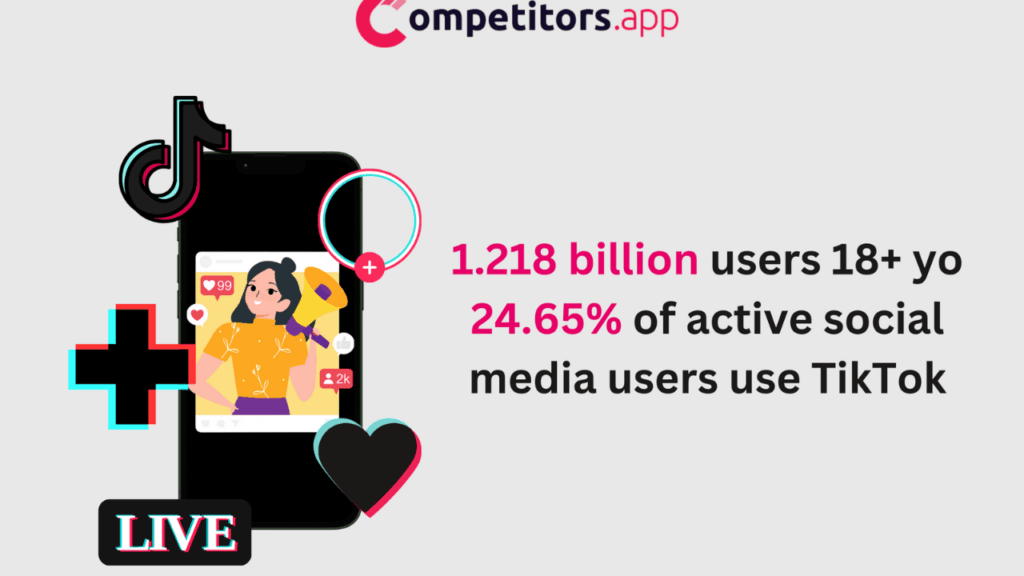
6. Sustainability and Ethical Responsibility
As TikTok continues to grow, there will likely be an increased emphasis on sustainability and ethical responsibility. Both users and businesses are becoming more conscious of environmental and social issues, and TikTok will need to address these concerns.
- Key Trends:
- Sustainable Practices: TikTok may introduce features that promote eco-friendly and sustainable content, encouraging users and brands to create content that supports environmental awareness.
- Social Responsibility: TikTok could place more focus on supporting social justice movements, mental health initiatives, and diversity through both content and corporate initiatives.
- Ethical Marketing Guidelines: The platform may develop stricter ethical marketing guidelines to ensure that businesses and influencers are promoting socially responsible content.
For businesses, adopting these values and incorporating them into TikTok marketing strategies could help strengthen their brand image and appeal to socially-conscious consumers.
Conclusion
In conclusion, TikTok has become more than just a social media platform—it’s a global cultural force that is shaping the way we create, share, and consume content. With its rapidly growing user base, innovative features, and increasing role in digital marketing, TikTok’s future looks incredibly promising. However, it is not without its challenges, ranging from privacy concerns to criticism about its impact on mental health and its ethical responsibilities.
As TikTok continues to evolve, it will face greater competition, regulatory pressures, and the need to balance innovation with user well-being. For businesses, TikTok offers exciting opportunities for marketing, but it’s crucial to stay informed about the platform’s evolving policies and features. By leveraging TikTok’s capabilities responsibly and creatively, businesses can connect with a vibrant and engaged audience while contributing to a positive digital ecosystem.
Looking ahead, TikTok’s influence on culture, entertainment, and even commerce will continue to grow, providing endless possibilities for creators, brands, and users alike. Whether you’re a content creator, a business looking to reach a new audience, or just an avid user, staying ahead of TikTok’s changes will be key to navigating its future success.
